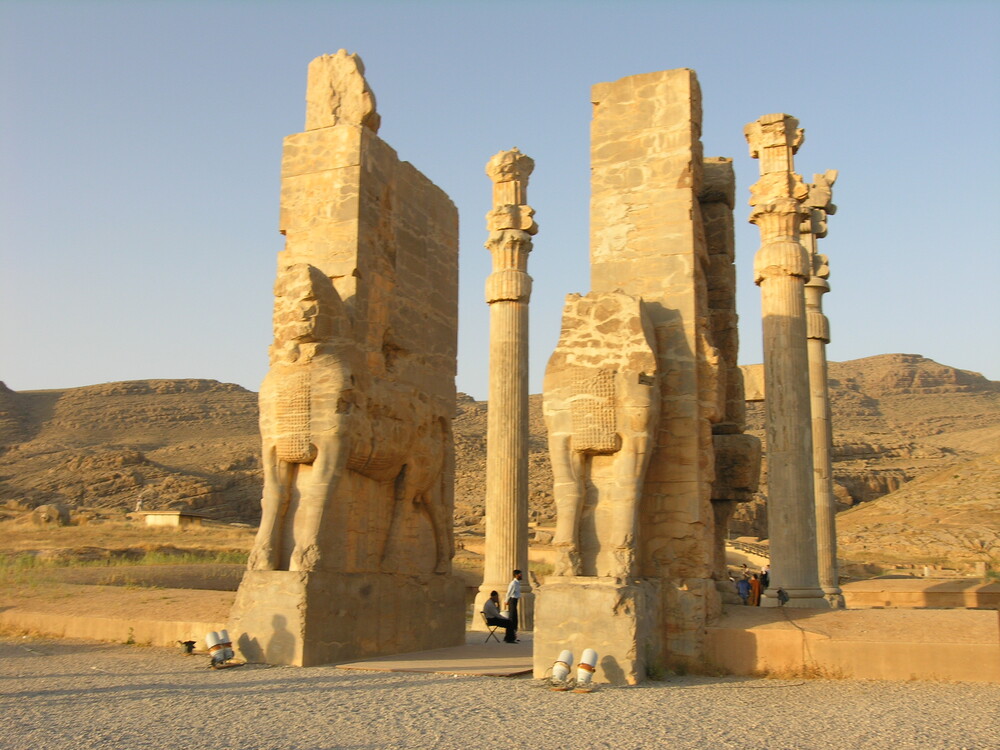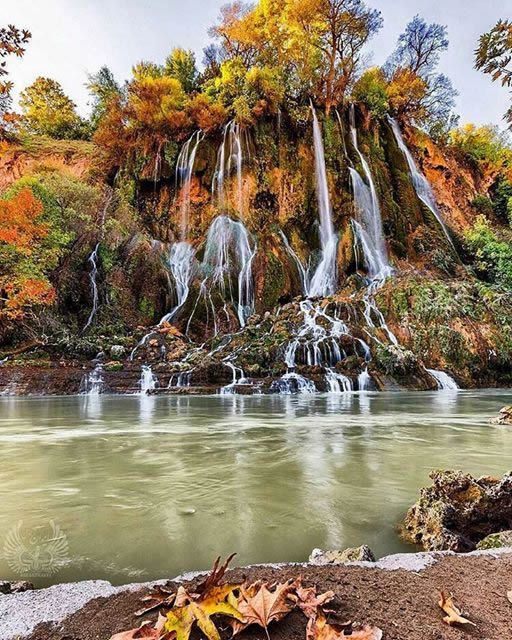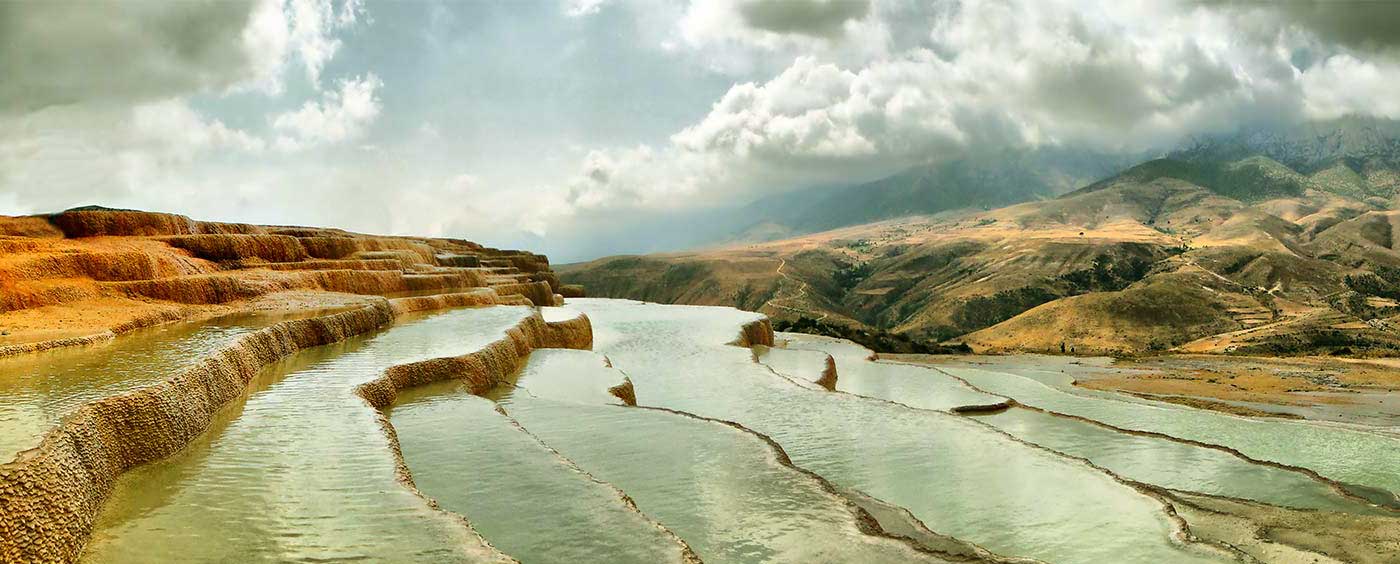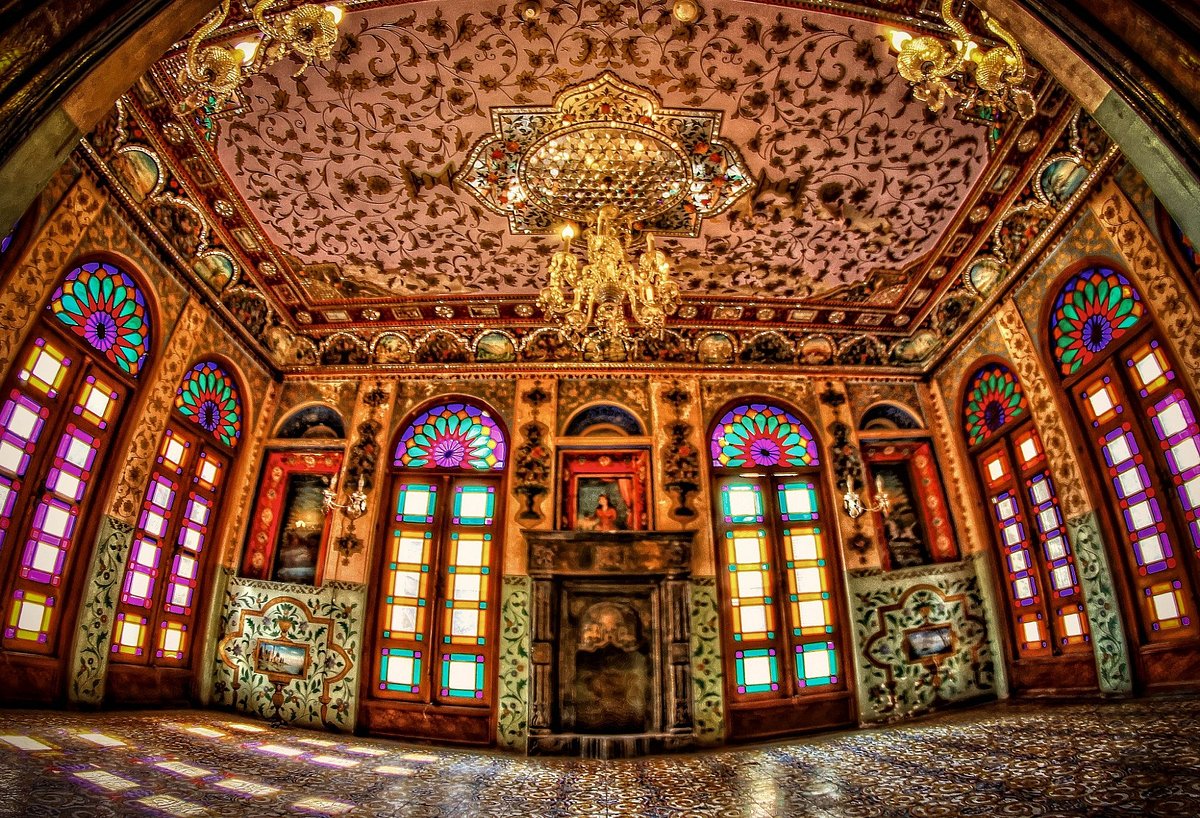Persepolis

Takht-e Jamshid (Persepolis, Parse, Parse Polis), is a huge complex including palaces, gates, kings mausoleums, reliefs, and glorious stairways constructed on the west hillside of Rahmat mountain; it was started to establish in 518 BC and completed after 150 years.
Being developed during the dynasty of Darius I, Xerxes and Artaxerxes I, this ancient city was considered a majestic and ceremonial capital for Achaemenian, which had been constructed on a stone terrace higher than the Marvdasht flatlands.
Achaemenid architecture, best-known as the art of integration and innovation, is one of the most artistic and architectural masterpieces of the ancient world. The palaces of this complex are consisted of several important parts such as: entrance stairs, gate of all nations, Āpādānā palace (Royal Bār-e-ām palace), Tachar (exclusive palace of King), Hadish palace, Hall of Tripylon (Triple Gate), Palace of the Hundred Columns, incomplete gateway, and mausoleums in the eastern part.
Based on various evidences, certain usages are considered for Persepolis such as temporary residence and resting place, a place to hold the rituals and spring ceremonies, an observatory for astronomical studies, the Council and Parliament place, a great worship place for performing rituals and also a Ziggurat inspired by the architecture of Mesopotamian Ziggurats.
Limestones in different colors are installed here without any mortar and only by use of metal clamps. Many different people had been employed by Achaemenian in the process of making this huge complex; in addition to a monthly wage, they were provided with the labor insurance, too.
In 321 BC Alexander set fire to Persepolis and a great part of the complex was destroyed.


